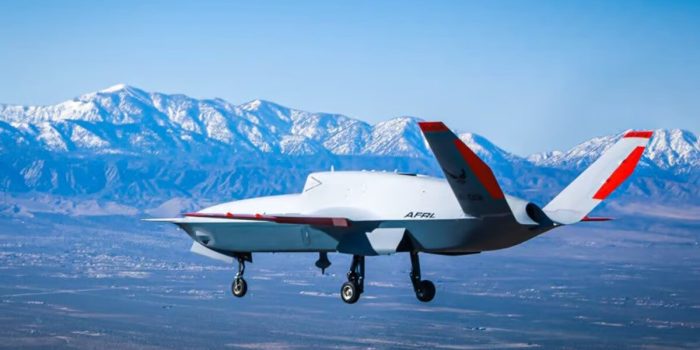The US Air Force recently carried out the inaugural flight of its XQ-67A Loyal Wingman combat drone, marking a significant advancement in military UAV technology. Manufactured by General Atomics, this drone utilizes automotive design methodologies, promising enhanced affordability and flexibility compared to its predecessors.
Military powers like the US are increasingly reliant on drones for combat and various military operations. These unmanned aerial vehicles not only address pilot shortages but also minimize human exposure to danger while serving as force multipliers, augmenting the capabilities of piloted aircraft.

However, a key challenge remains in acquiring drones in sufficient numbers and with diverse capabilities to complement piloted fighter planes effectively. The XQ-67A, an evolution of the XQ-58A introduced in 2019, aims to address this need by offering a low-cost, low-maintenance, and adaptable drone that can match the performance of conventional fighters.
The strategy involves adopting engineering practices from the automotive industry, where common chassis enable rapid modifications and facilitate the production of various models. By employing a standard airframe with interchangeable substructures and systems, the Air Force and General Atomics aim to expedite drone development, whether for combat applications like the Off-Board Weapon Station (OBWS) or sensor-equipped variants like the Off-Board Sensing Station (OBSS).

The inaugural flight of the XQ-67A occurred on February 28 at General Atomics’ Gray Butte Flight Operations Facility in California, focusing on design validation and emphasizing the OBSS functionality. Once the airframe is deemed ready, additional systems, sensors, and autonomous avionics will be integrated.

Trenton White, the program manager from the Air Force Research Laboratory (AFRL), highlights the adoption of best practices from industries like automotive, aiming to reduce time-to-market and development costs while ensuring rapid deployment of military aircraft. The project aims to validate an open aircraft system concept for both hardware and software, showcasing the potential for efficient and cost-effective drone development.
“It’s really about leveraging this best practice that we’ve seen in the automotive and other industries where time to market has decreased, while the time to initial operating capability for military aircraft has increased at an alarming rate,” said Trenton White. “The main objectives here are to validate an open aircraft system concept for hardware and software and to demonstrate rapid time-to-market and low development cost.”


